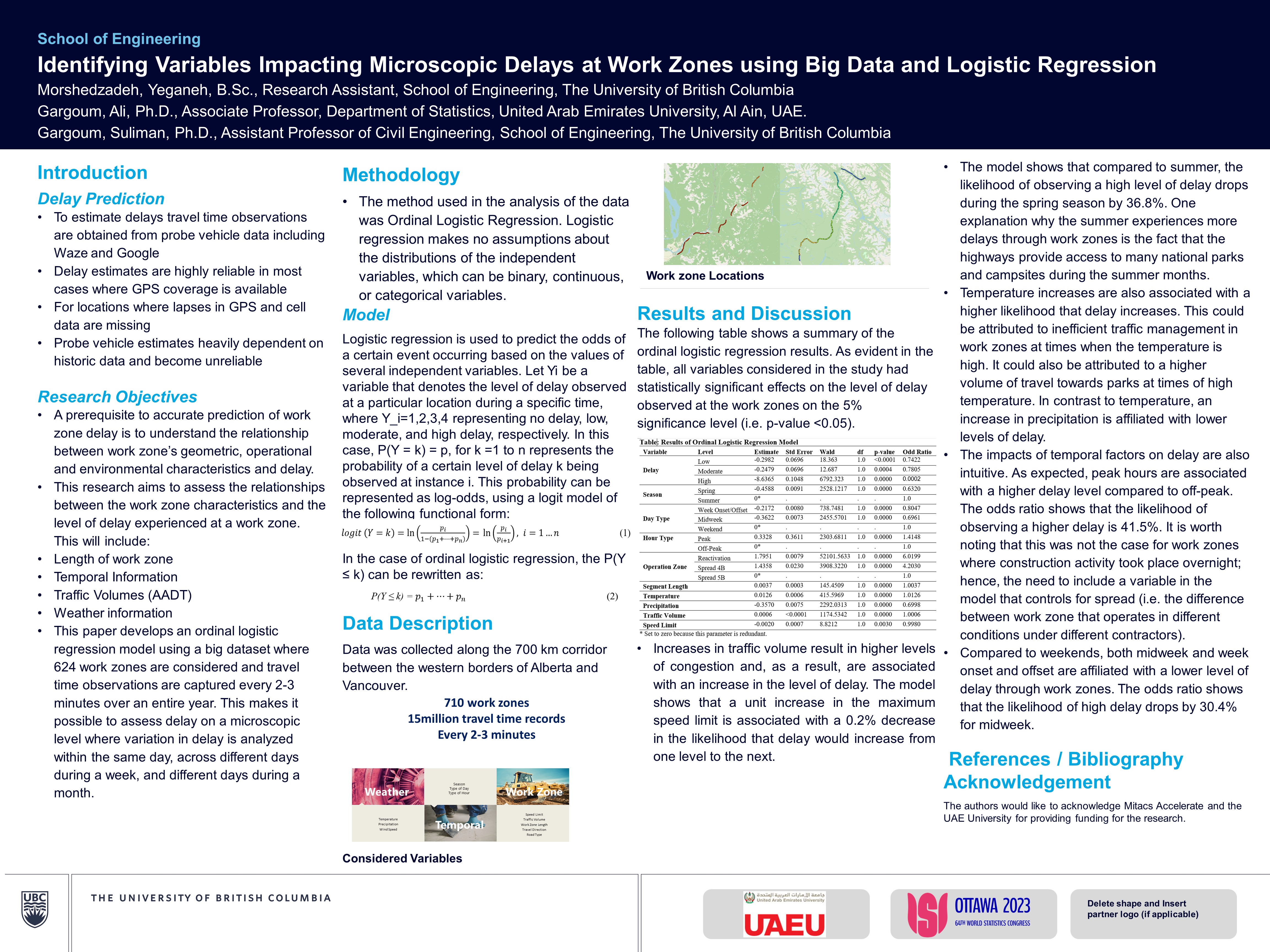Identifying Variables Impacting Microscopic Delays at Work Zones using Big Data and Logistic Regression
Conference
64th ISI World Statistics Congress
Format: CPS Poster
Session: CPS Posters-01
Monday 17 July 4 p.m. - 5:20 p.m. (Canada/Eastern)

Abstract
Traffic management through work zones is a challenging task that requires providing a balance between creating a safe environment for workers and minimizing traffic delays. To effectively manage traffic through work zones, it is essential to understand how delays are affected by internal and external factors such as the design characteristics of a work zone, geometric characteristics of the road, weather information, and traffic conditions. Although modelling work zone delays has been explored in the literature, most studies are limited to analyzing data from a small number of work zones using limited travel time observations. Existing literature is also primarily concerned with predicting macroscopic travel time. To address these gaps and gain more insights on the factors impacting work zone delay, this paper uses a big dataset that includes 2-3-minute travel time observations collected over a year to analyse delay on a microscopic level. The raw dataset consisted of approximately 15 million travel time observations that were collected at 624 work zones that are spread along a 700km corridor between the western borders of Alberta and Vancouver, BC. Random-parameter logistic regression was used to assess the impacts of spatial, temporal, environmental, and segment-related variables on work zone delay. Among other observations, the model revealed that peak hours, weekends, summer months, and work zone segment length were associated with high delays. These relationships were all found to be statistically significant.
